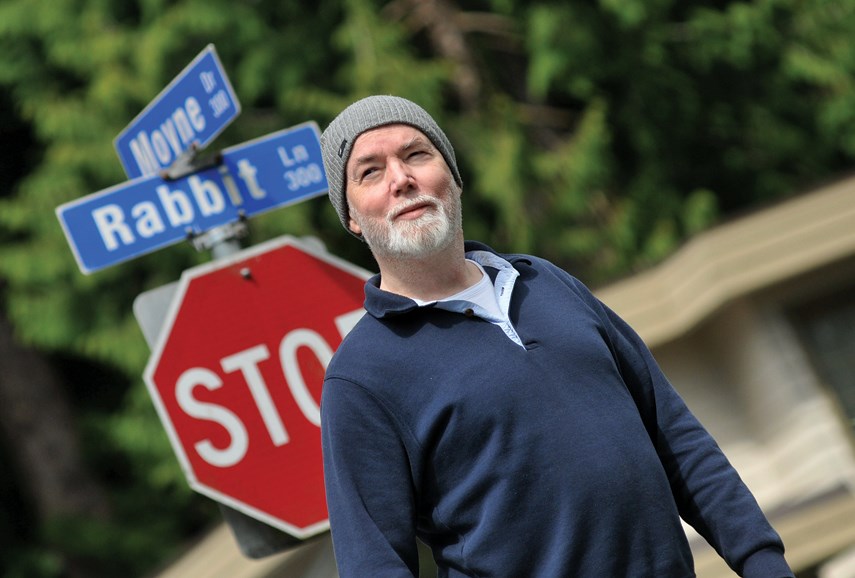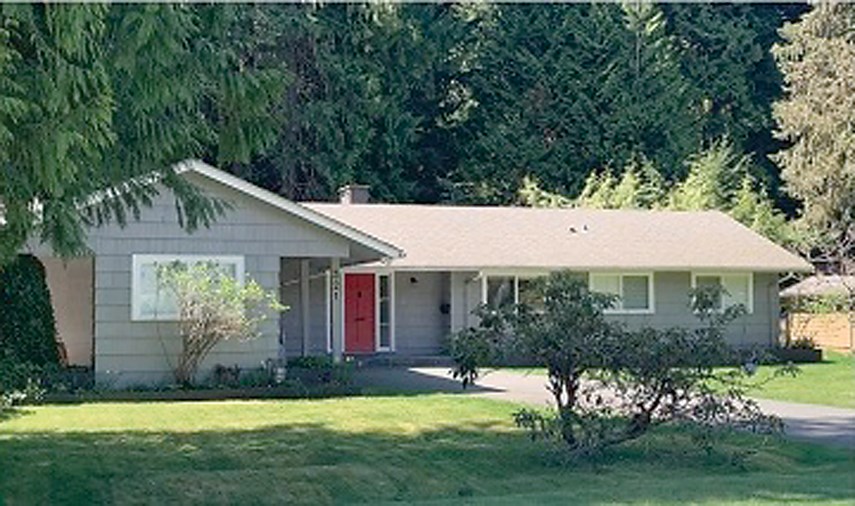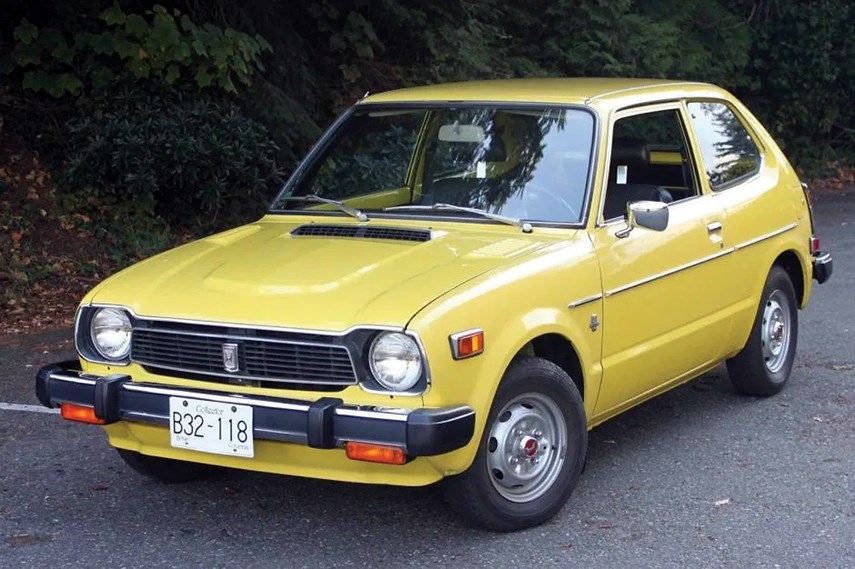As Douglas Coupland writes in Girlfriend in a Coma, his 1998 novel about teenage house-wrecking parties, long slumbers, starry-eyed pasts and apocalyptic, dystopic futures, the little West Vancouver hamlet of the ’70s wasn’t the glitz and glamour that people now – or even readers as far back as the ’90s – might have thought.
“People across the city believed our hillside neighbourhood to be a cradle of never-ending martini-clogged soirées and bawdy wife-swaps,” recounts Richard, one of the protagonists of the novel, which takes place almost entirely on the North Shore. “The truth would have bored them silly, as it was middle-class dull to the point of scientific measurability.”
Tracing an almost 20-year period starting in the late ’70s until the late ’90s, the novel follows the exploits of high school pals Richard, Karen, Wendy, Linus, Pamela and Hamilton as they pull up in a Datsun to “a grad party on Chartwell Drive – rock walls, hedges, and dwarf shrubs” as teenagers and move through the occasional dizzying highs and casual doldrums of adulthood.
Near the outset, Karen, Richard’s girlfriend, falls into a coma that last 17 years. When she wakes up, her life, along with the lives of her friends and family, seem to miraculously carry on again – but then, suddenly, the world ends.
But before the novel’s impending apocalyptic turn and moral-of-the-story moment, we learn about these characters’ lives and how most of them grew up on Rabbit Lane in West Vancouver. The book is also full of escapades at Cleveland Dam, virginities lost on Grouse Mountain, cozy bungalows on Moyne Drive, and fast-paced employment in the booming local film industry.
When one character’s daughter starts dating a local bad boy, we learn that he lives in “a moss-roofed 1963 cereal box in darkest Lynn Valley atop an unmown lawn sparked with gasoline burns and neglected auto parts.” Oh, how times have changed.
'The Twilight Zone' hits West Vancouver
Coupland, in an interview with the North Shore News, agrees things have changed a lot, though perhaps not as much as we might think. Those vestiges of the past and the promise of a bold future – one that’s either divine or desolate – are still within reach.
“We’re really deep inside the 21st century now and the 20th century really is the past,” says Coupland. “Before too many more houses are torn down and before things change too much I’d like to capture a little bit of the way things were – but punctuated with the demons we live with in the moment.”
Inspired by Girlfriend in a Coma, Coupland is revisiting his old novel for his new Rabbit Lane art project, with the goal to create a series of large-format photos that will draw on themes and storylines from the book.
He wants to imbue the photos with an almost supernatural quality that will make them look like a foreboding spell has been cast on the Rabbit Lane neighbourhood, where much of the book takes place – and where Coupland, who grew up and still lives in West Vancouver, had many friends growing up.
“It’s as quiet as the grave down there. It borders on the forest, which is itself inherently mystical,” he says. “What I want, ultimately, is to have something that is fantastically everyday, punctuated or interrupted by something extraordinary or massive. I think when the photos are done I want them to have a science fiction feel to them – almost sort of like The Twilight Zone hits West Vancouver.”
The novelist, visual artist and popularizer of the term generation X also wants your help with the project, dear reader.
In order to give the photos a hyper-local and authentic quality, Coupland is looking for residents in North Vancouver and West Vancouver to volunteer homes, locations, props and acting services for the project.
There’s a large laundry list of what Coupland is looking for for the shoots, which you can examine more fully on the project’s website (rabbitlane2021.wordpress.com), but perhaps the most important component involves houses of a certain era.
Vintage homes, classic cars
Baby boomers and gen-Xers will know immediately the kinds of houses that are being sought after, says Coupland – they’re the kind they used to live in, party in and eventually, help their parents move out of. Think: North Shore houses built in the ’50s and ’60s that are typically one-storey or split-level homes, the kind of which blueprints were supplied for free by the Canadian Mortgage and Housing Corp. back in the day. “Which is why Canadian houses look the way they do, but that’s another discussion…” notes Coupland.
He’s also looking for North Shore motorheads that may have held onto period cars from the late ’70s through the ’90s, the kind of car you may have driven to high school or been dropped off in, such as a Datsun B-210, a Ford Pinto, a Honda Civic, or what was likely your dad’s car: an Oldsmobile Cutlass.
And hey, if you’re looking and feeling like a 1979 high school graduate, or perhaps want to portray what that graduate may have looked like 20 years later, then Coupland would like to know if you’d want to be a photo model for the gig.
And while he admits it’s a Hail Mary, Coupland would love to stage a definitive ’70s house-wrecking party photo and film some shots at a derelict North Shore house. “So if you’re about to demolish a place, this is the last chance to let it shine.”
The purpose of the photos is to capture a certain moment of time long ago, while casting a new, possibly foreboding and apocalyptic spell over it, says Coupland.
While he’ll look to photograph intriguing scenes from his novel – such as a person who’s fallen into a coma being carried away in a stretcher – some scenes, like a group of post-apocalyptic scavengers rummaging for canned goods in the basement of the Capilano Golf and Country Club while the forest around the club is burning down, may be harder to pull off.
“There’s only so much you can plan, and then on the day there’s an inspiration,” he says. “I think the draw of this is for people who are from here and people who live here is realizing this is actually a real place, which is to say I think we grew up thinking that Vancouver is nowhere, that West Van or North Van was nowhere; it was like blank sheets of paper or something – but now, as we’re in the ’20s, it’s like there actually was something very specific that once happened here and something very specific continues to happen.”
Exhibition slated for next year
Coupland is hoping to shoot the scenes in late August. The Rabbit Lane exhibition is slated to open at West Vancouver Art Museum in March 2022.
“The West Vancouver Art Museum is delighted to partner with Douglas on this project,” stated Hilary Letwin, museum curator, in an emailed statement. “We are excited to be presenting an exhibition inspired by his book, Girlfriend in a Coma, which was written in West Vancouver, is set here and which will have special resonance for visitors. Despite these local connections, the themes of the book and the resulting exhibition explore global reflections, which will appeal equally to those from beyond the community.”
If you have a house or car you think would be appropriate, or if you would like to volunteer in the project as a model or set person, Coupland invites you to send jpegs and mp4s to: rabbitlane2021@gmail.com.




.png;w=128;h=120;mode=crop)


